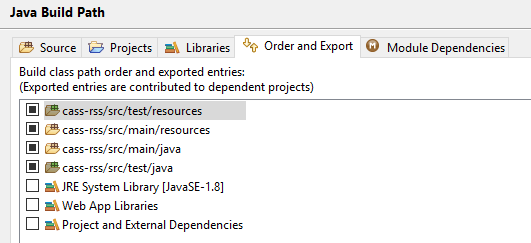I have a Spring-Boot application where the default properties are set in an application.properties file in the classpath (src/main/resources/application.properties).
I would like to override some default settings in my JUnit test with properties declared in a test.properties file (src/test/resources/test.properties)
I usualy have a dedicated Config Class for my Junit Tests, e.g.
package foo.bar.test;
import org.springframework.boot.autoconfigure.EnableAutoConfiguration;
import org.springframework.context.annotation.Configuration;
import org.springframework.context.annotation.Import;
@Configuration
@Import(CoreConfig.class)
@EnableAutoConfiguration
public class TestConfig {
}
I first thought that using @PropertySource("classpath:test.properties") in the TestConfig class would do the trick, but these properties will not overwrite the application.properties settings (see Spring-Boot Reference Doc - 23. Externalized Configuration).
Then I tried to use -Dspring.config.location=classpath:test.properties when invoking the test. That was successful - but I don't want to set this system property for each test execution. Thus I put it in the code
@Configuration
@Import(CoreConfig.class)
@EnableAutoConfiguration
public class TestConfig {
static {
System.setProperty("spring.config.location", "classpath:test.properties");
}
}
which unfortunatly was again not successful.
There must be a simple solution on how to override application.properties settings in JUnit tests with test.properties that I must have overlooked.


ReflectionTestUtilsto replace an configuration provided API key so I could test for supplying a bad API key: https://mcmap.net/q/89118/-how-to-override-properties-by-each-test-in-unittest – Gabelle